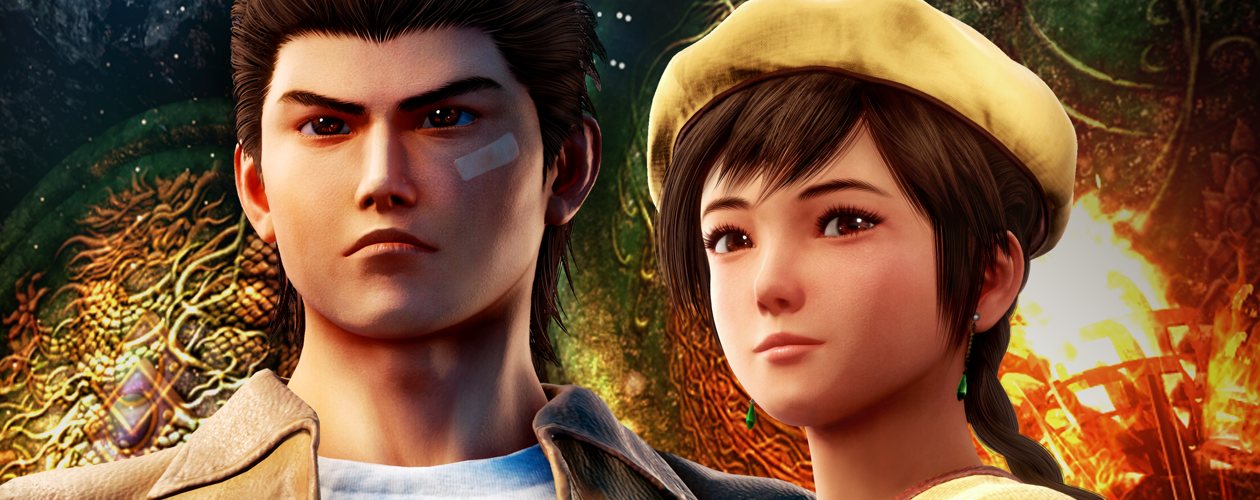For well over a decade after the death of the Dreamcast, Shenmue fans would have been convinced that they would would never see a third game or a continuation of the story. Despite boasting a voracious cult following, both games were seen as major commercial failures. Shenmue’s creator Yu Suzuki had originally planned several instalments from the get go though development horrors, colossal budgets, and Sega’s withdrawal from the console market spelt doom for Shenmue.
For a series primarily focused on its characters and story, cutting the Shenmue saga short and leaving fans on a cliffhanger for the best part of two decades seems unthinkable today, but that’s precisely what happened. And just as we were about to finally get some answers as well!
Recapping the Shenmue saga is surprisingly straightforward and there’s a brief video you can watch before starting a new game to catch up or refresh your memory. After his father is murdered, Ryo Hazuki goes in search of his killer, the enigmatic Lan Di. After chasing leads in his hometown of Dobuita, Ryo sets sail for Hong Kong before making his way to the mysterious walled city of Kowloon. The last we saw of our hero in Shenmue II, he’s travelled across the mountains of Guilin to Bailu village, standing before a familiar dragon/phoenix mural his father is said to have visited many years ago.
These may be long games yet they’re ones with only a handful of major story beats, fleshed out by Ryo’s day to day busywork and building relationships with the various characters you come across. Shenmue III carries that same torch though from the previous game’s finale, though there isn’t quite as much meandering in Ryo’s search for the truth.

Bailu village isn’t a checkpoint in Ryo’s journey. Much like Kowloon, Hong Kong, and Dobuita, it’s a sprawling ecosystem in which dozens of inhabitants go about their business, the many parts of this clockwork machine changing the further you progress with the game’s story. There’s a sense of place here and although Bailu may seem overwhelming at first, Shenmue III gates your access to certain areas, allowing you to memorise its many paths and landmarks over time.
Shenmue has gone on to inspire and influence countless games, though trying to label the series using generic labels is just as pointless as it was back in 1999. Its bemusing mish-mash of ideas has been perfectly preserved, combining roleplaying and social simulation with brawler style combat and a range of quirky side activities.
It’s easy to see why many consider the Yakuza series to be somewhat of a successor to Shenmue, yet those games are so much more focused and coherent. If you like, you can spend entire days in Shenmue III simply chatting with villagers, carrying out chores, and spending your hard earned cash on meals, trinkets, and gambling. The many people you encounter aren’t your typical one-line RPG drones, either. Each one is convincingly embedded within Bailu and develops over time, their dialogue changing as Ryo continues his investigations.

Something that always felt off about those previous two Shenmue games was how rarely combat sections would crop up. Entire battle scenes would occasionally be relegated to anticlimactic QTE sequences, which wasn’t always such a bad thing considering how sluggish and ropey the fighting mechanics were.
In Shenmue III, story battles are still relatively few and far between, but there are plenty of opportunities to spar with other NPCs or train Ryo’s kung fu skills through mini-games. You’ll actually earn experience through doing so, increasing your damage output and health while mastering specific moves.
Combat itself is far more approachable than before, though it carries over some of that familiar Shenmue clunk. There’s still a slight delay between button inputs and what’s happening on screen, but combos are far less finicky with a new feature allowing you to assign multiple moves to a single special attack button.
On reflection, that sums Shenmue III up as a whole. Ys Net has definitely modernised the series template, but there’s plenty there to tether this latest instalment to those two previous games. If not through the slightly unwieldy gameplay and emphasis on chore-like busywork, it’s the story’s pacing and unrefined dialogue between characters.

Shenmue III doesn’t push the Unreal Engine 4 to its limits yet, on the whole, there’s an enchanting aura about it. Yes, some character models look comically garish, but there’s a beauty to the game’s environments – spaces that you actually live in instead of racing through on a whistle stop tour. Where Shenmue previously captured the hustle and bustle of cramped urban areas, it manages to do the same with the vibrant and somewhat mystic Bailu village.
Ryuji Iuchi’s soundtrack will make you feel like Shenmue never went away. The same can also be said of the voice acting which is packed with as much melodrama and dodgy dialogue as those past games. Corey Marshall makes his return as the English Ryo, his flat tone and delivery may seem like a deliberate throwback though Shenmue fans wouldn’t have it any other way.
It’s quite a reductive conclusion to land on, but Shenmue III is exactly what you’d expect. From what we’ve played so far (and we’ve only scratched the surface) it has proven to be a faithful continuation of the beloved landmark series and one that’s benefitted from some light modernisation without changing what fans found so magically alluring about Shenmue in the first place.



